5 backyard plants that could damage your home
Whether you’re aiming to grow more trees or plants — or have existing trees in your yard — it’s always worth checking to make sure they won’t cause damage to your property.
Similar to knowing invasive plants to keep out of your yard, such as Japanese Knotweed and Bamboo, there are some thirsty, fast-growing species that should be placed away from your home. These plants can easily spread, causing potential damage to house foundations and gardens.
Note that these particular plants and trees need incredibly high volumes of water to thrive. Once they start drawing water, soils naturally shrink in periods of drought — especially clay soils. More so, if these are sited near your house, it can affect the structural foundations of your property, and risk subsidence.
Worst case, the roots could spread to your neighbors, which could end up costing you in fines and unnecessary hassle! In addition, some climbing plants on the walls of your home can make their way into cracks, affecting the brick mortar — causing potential issues with mold and mildew.
And it’s bad news if you’re looking to sell, as realtors have stated such plants can affect the value of property. That’s why it’s important to know what backyard plants could damage your home. Bear in mind to always seek professional advice if you need to remove large trees and shrubs in your backyard. Here are 5 backyard plants that could damage your home, and to be avoided at all costs.
1. Foxglove Tree
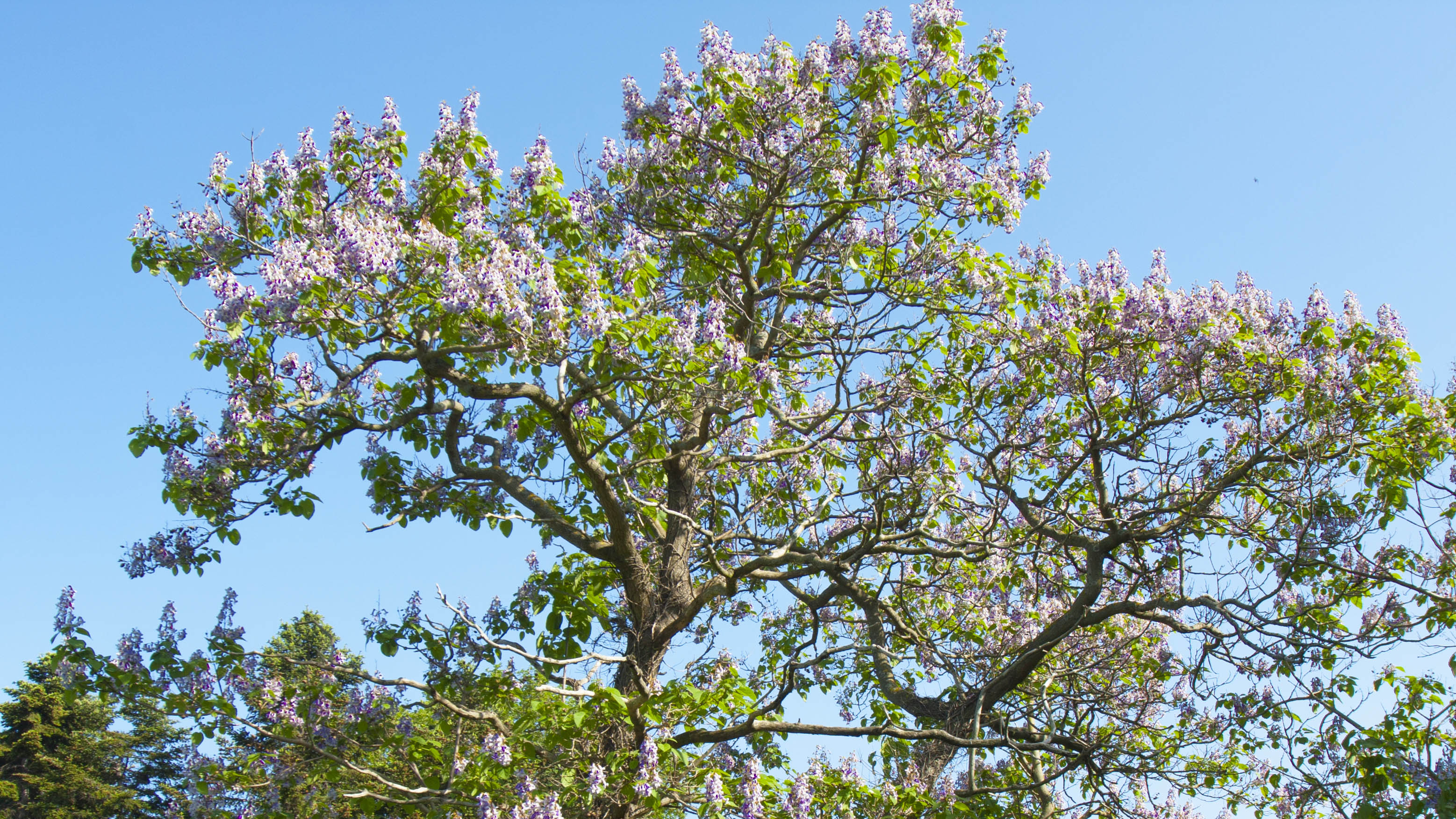
The Foxglove, also known as the Paulownia Tomentosa, Empress, or Princess tree, is notorious for being a fast-growing tree, and taking over your backyard. These can rapidly grow up to 30 feet tall, with a wide spread of 20-30 feet. Additionally, after the first year of planting, it can grow up to 15 feet annually until maturity.
Since they produce thick, large roots, they are known to damage foundations, drainage systems and concrete paving . Not only do the roots suck up resources like water and essential nutrients, but can affect the growth of other plants nearby by cutting off sunlight.
In fact, the Foxglove tree has been classified as a weed in Connecticut, and considered an invasive plant across North America. If you do want to plant Foxglove however, it’s best to position in medium to large yards, away from the house.
2. Poplar, Willow and Oak trees
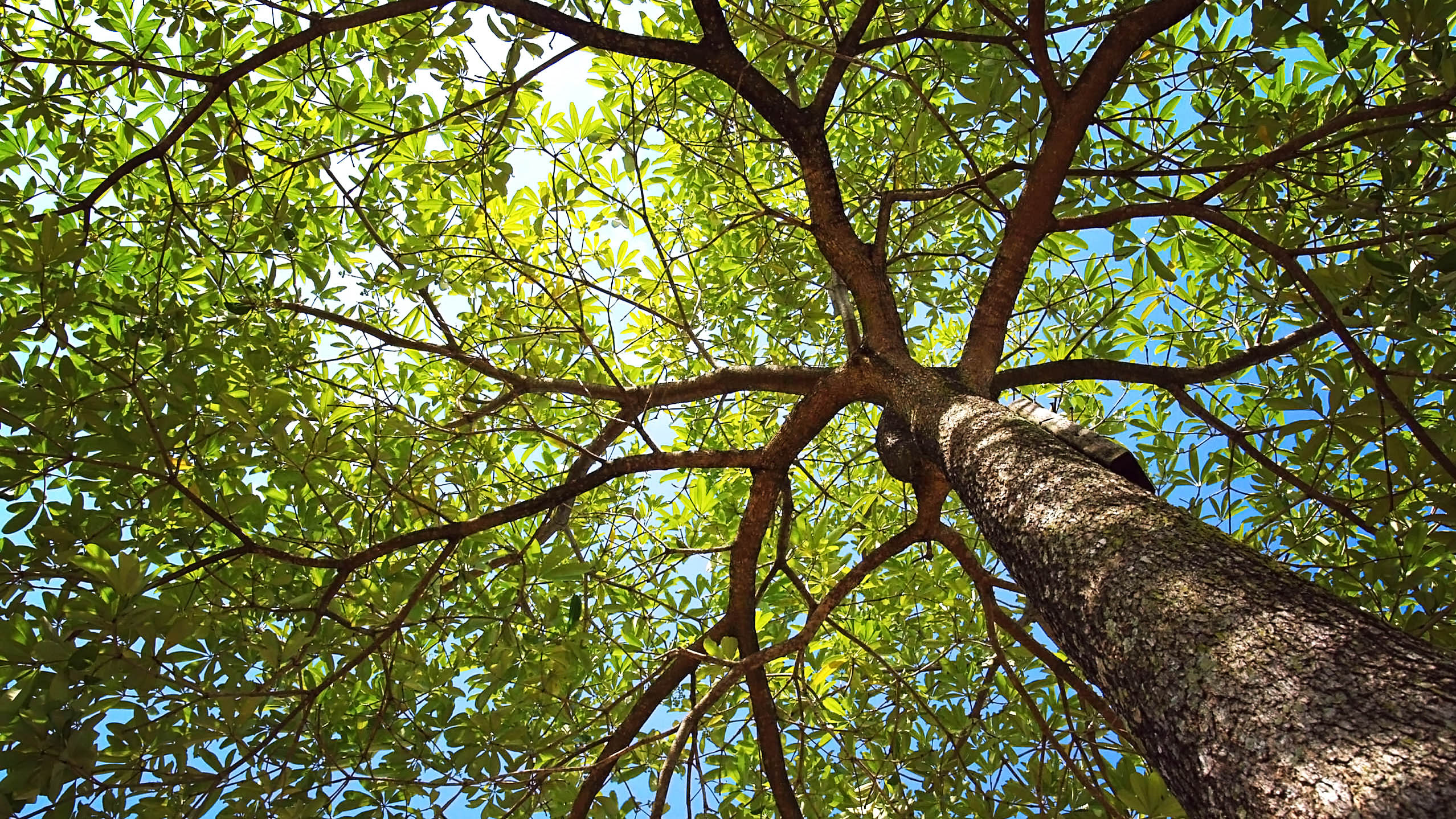
Grand trees such as Poplar, Oak and Willow may all look majestic in our yards, but they can also be a landscaping nightmare. Their fast-growing, thirsty roots are known to damage underground pipes, drainage systems, and the foundation of homes. In addition, their roots can often spread over 130 feet from the trunk, making them highly invasive. Interestingly, there are over 25 species of Poplar, which grow in different ways. The most common Poplar tree is Cottonwood, which tends to grow tall and thin.
Similarly, the ‘thirsty’ Willow and Oak trees can cause subsidence and soil shrinkage, due to their fast-growing roots. Their roots can easily take advantage of any cracks in concrete or under weak foundations. The Oak tree in particular has a large canopy that needs a large volume of moisture.
However, if you do have an Oak tree that’s further than 100 feet (30 metres) away from your home, this should be a safe distance. In any case, if it’s necessary to remove a large tree that is damaging your property, always consult with a tree surgeon who will safely remove and kill the roots.
3. Ivy
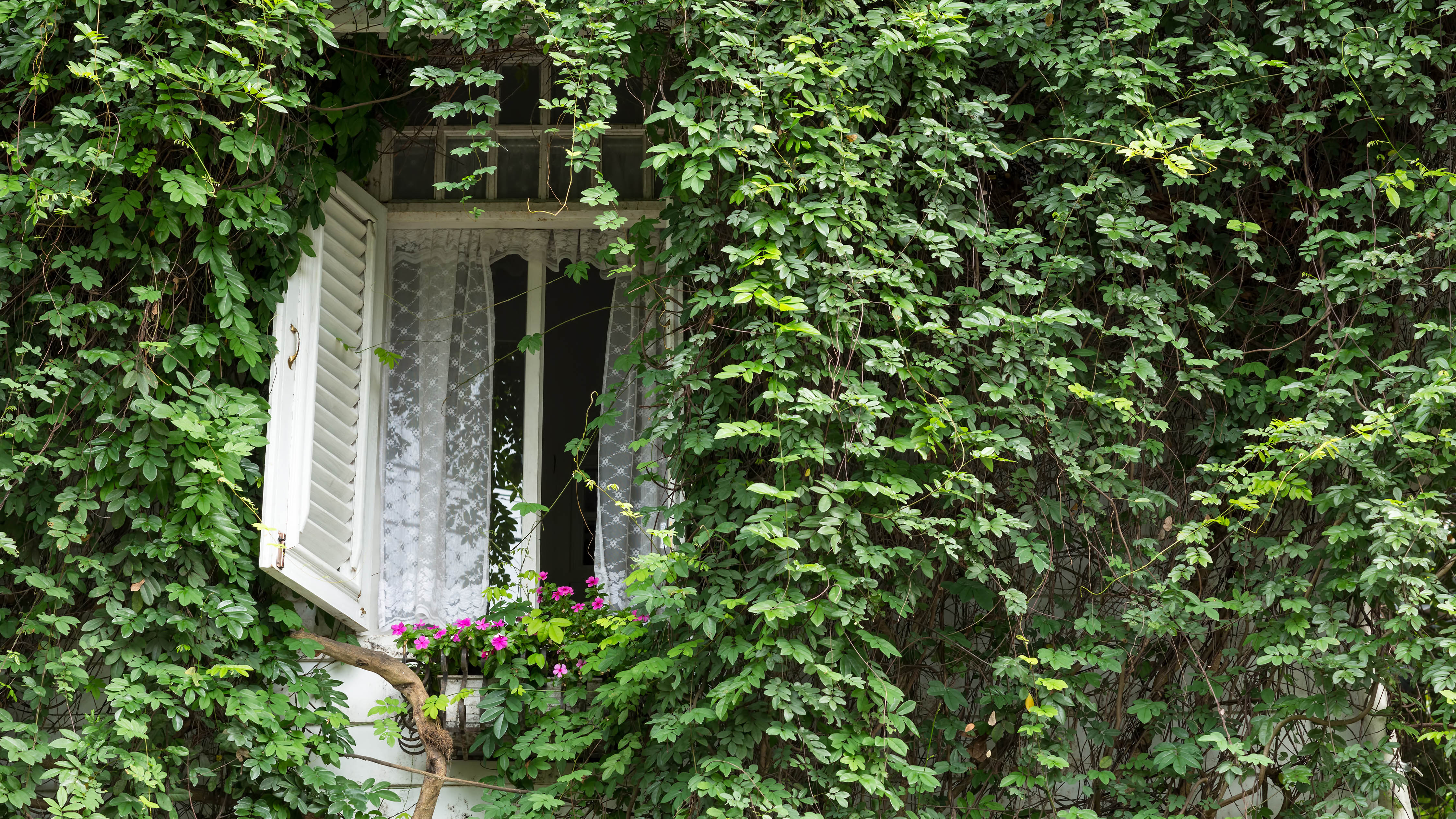
Ivies are a common, climbing vine that can often be striking up against walls. However, this can also cause serious damage to your home. If left to grow on walls, this can make its way through cracks, penetrate the mortar and damage brickwork. This could also lead to potential damp issues during colder months, resulting in mold or mildew problems inside your home.
What’s more, Ivy is known to quickly block guttering, which you’ll need to remove immediately and know how to clean gutters with or without a ladder.
Originally, this green vine was brought over from Europe to North America in the 1700s, and it can grow alongside almost anything, swallowing it whole. In fact, Ivy is known to completely destroy trees, cutting them off from sunlight or causing their branches to get too heavy and break off.
In most cases, Ivy can be peeled away wearing a pair of the best gardening gloves, or seek the help of a professional for successful removal.
4. Eucalyptus
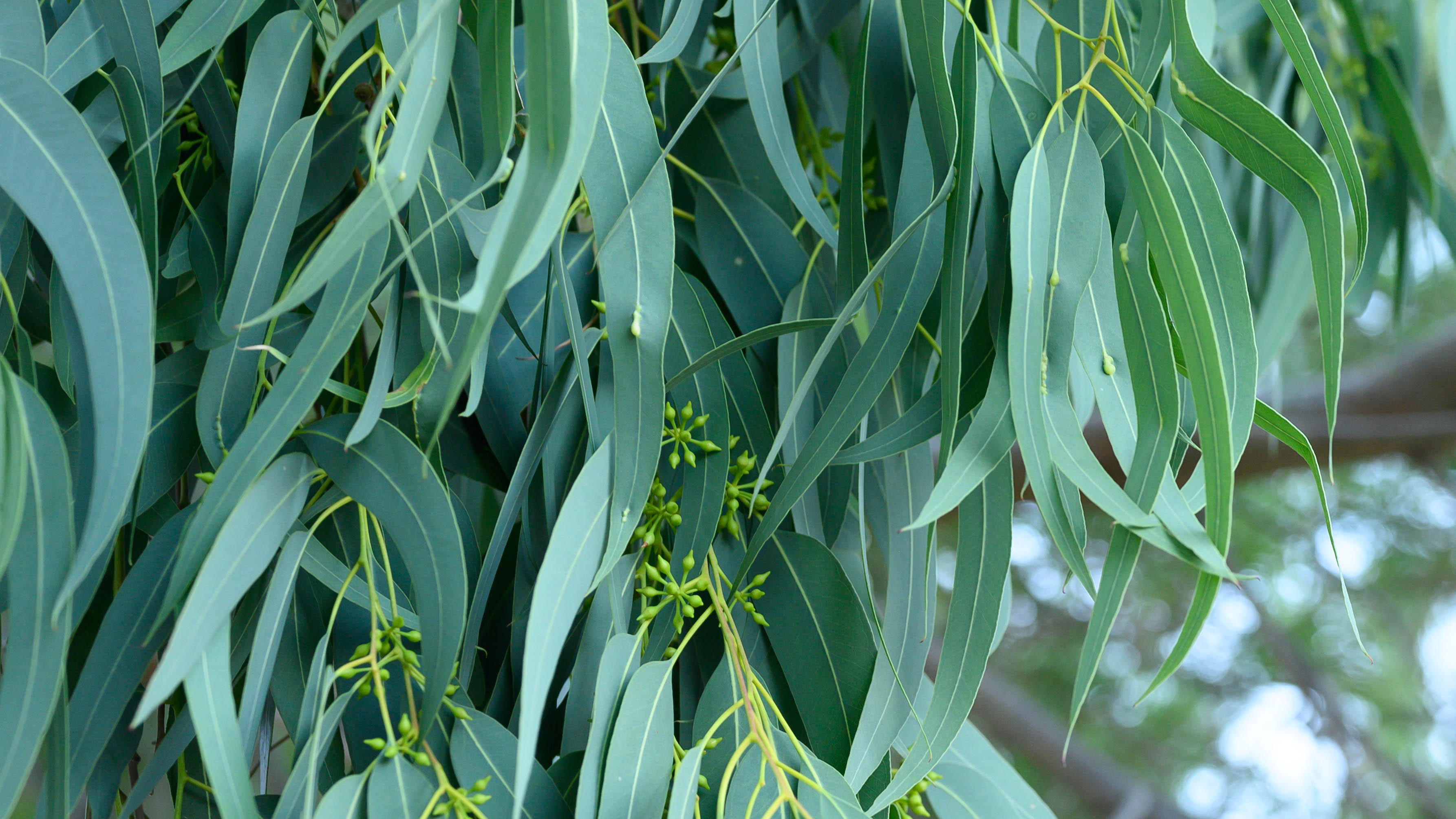
The popular Eucalyptus can make an attractive, lush feature in the home, but this is another thirsty, fast-growing plant that can cause damage to your property. This is especially the case if you have a Eucalyptus tree growing in your backyard.
As a fast-growing tree, a Eucalyptus tree’s lateral roots are known to spread up to 100 feet outward, with the ability to penetrate foundations. As a result, these are also known to grow into pipework, and septic tanks, damaging, clogging, and even cracking them.
In addition, Eucalyptus trees are known to drop heavy branches more than other trees. Fallen branches could essentially cause damage to your home, or potentially injure somebody.
If you do have a Eucalyptus tree however, experts recommend keeping it about 4 feet away from the house, and ensure it’s regularly pruned at the end of the season with one of the best pruning shears.
5. Chinese Wisteria
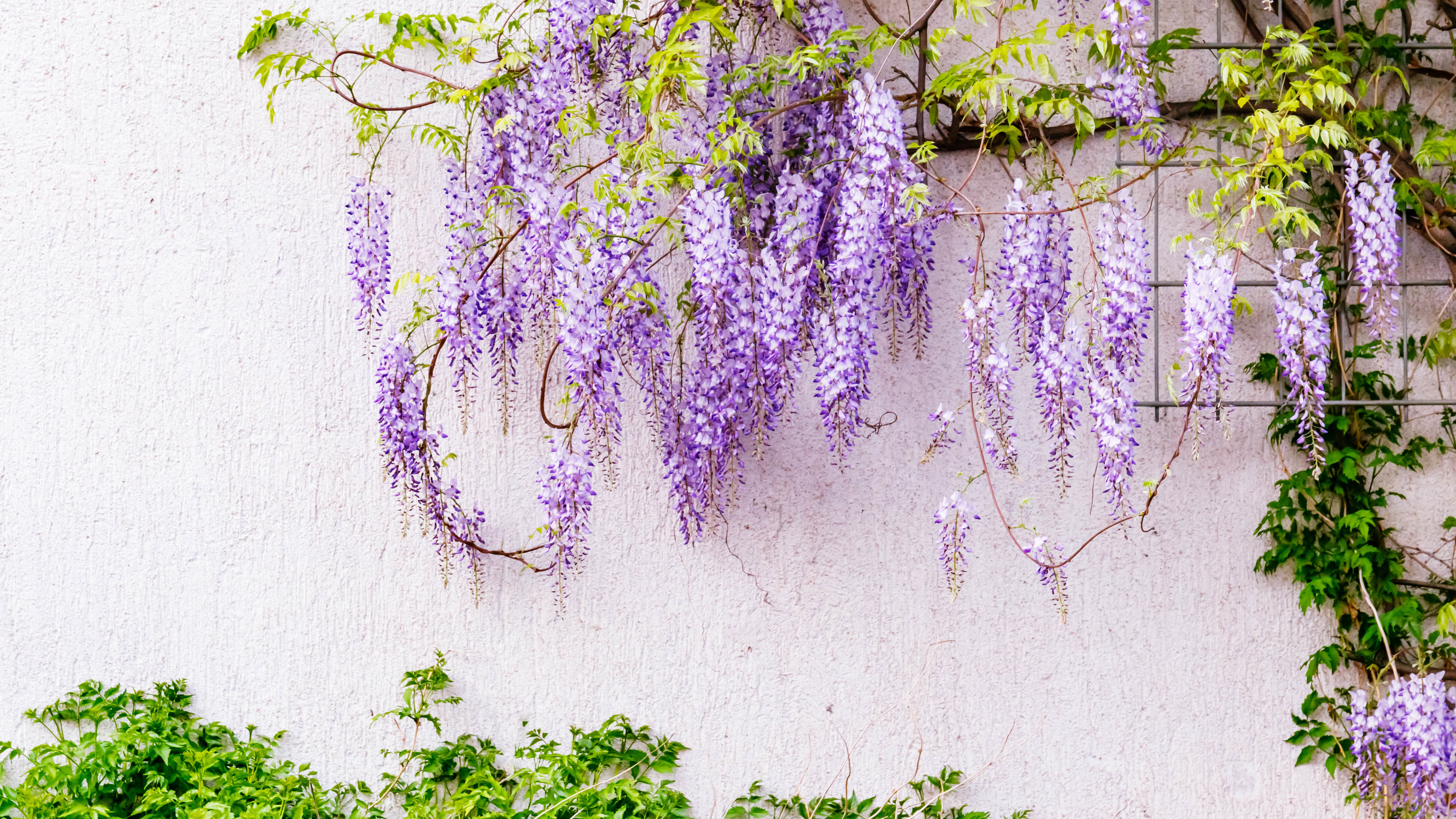
Chinese Wisteria may look pretty with their purple petals, but this is considered an ‘aggressive’ plant that can cause major damage to your home, sewer pipes and yard.
With its strong vines, it can often climb and penetrate underneath roofs and gutters. Typically, Chinese Wisteria can quickly grow up to 60 feet, with stems of up to 15 feet in diameter. That’s why it’s essential to always prune and cut this plant back once it gets out of control.
What’s more, if you already have weak structures, Wisteria’s fast-growing roots will force its way through loose concrete, stone or rubble. Plus, if left to grow and climb on fences, this can weaken the structure.
So ensure you keep this vibrant plant far away from your home if possible.
More from Tom’s Guide
For all the latest Technology News Click Here
For the latest news and updates, follow us on Google News.
